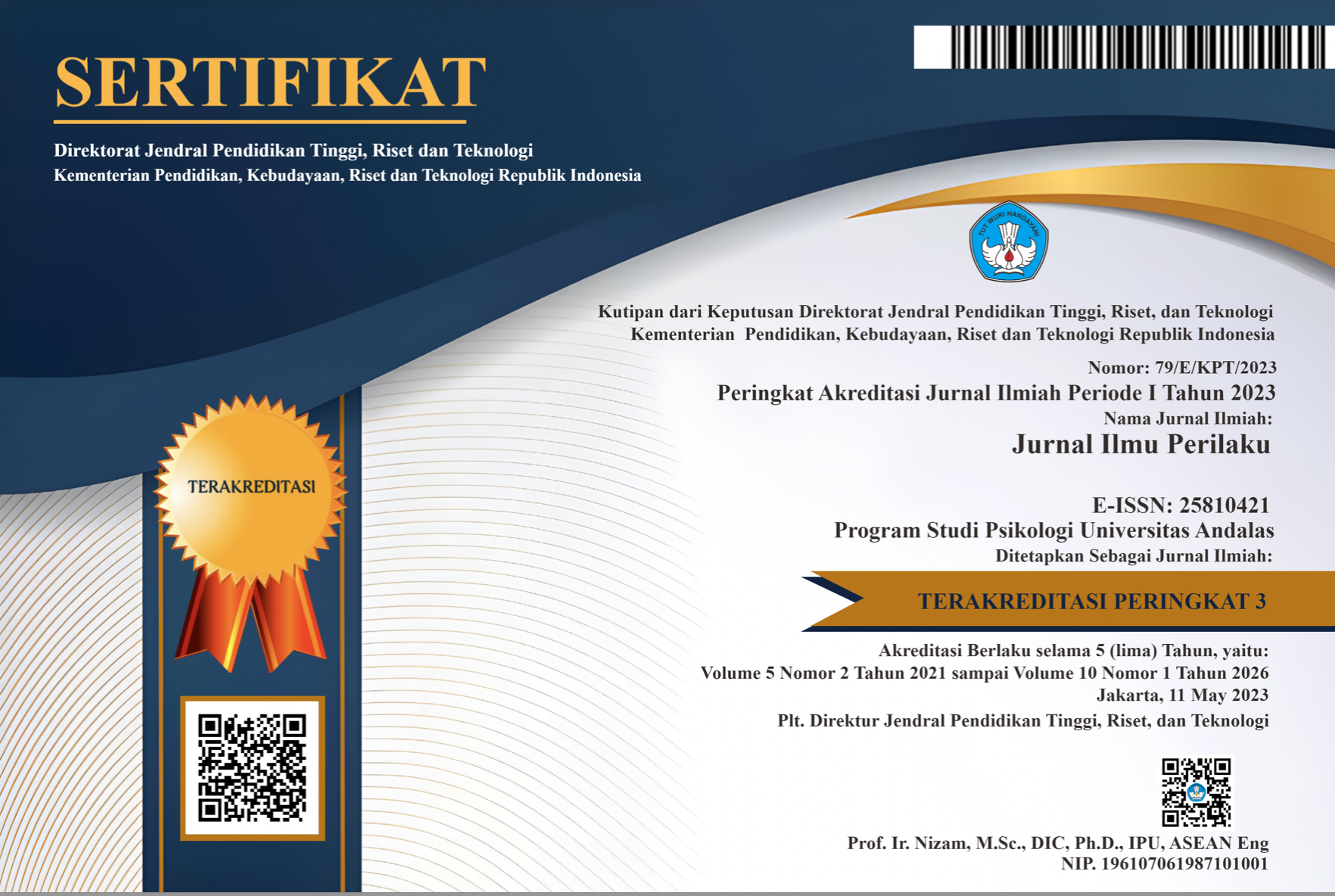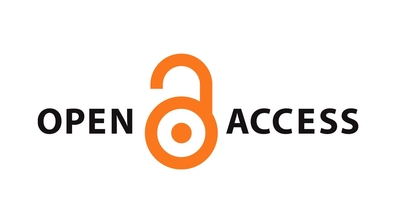Adaptasi Kenormalan Baru Ditinjau dari Ketahanan Keluarga dan Perilaku Disiplin Ibu Rumah Tangga di Yogyakarta
Abstract
The COVID-19 pandemic made much influence to human being life, having a systemic impact, life regulation, and stressing situation in Indonesia families. They got depressed and new normality adaptability which determines the functioning and well-being of the family in the future. This study aims examine the adaptation of new normality in terms of family resilience and self-disciplined behaviour. This study used a quantitative approach with a random sampling technique of 253 housewives in Yogyakarta. Data were collected using Google Form (3 scales of adaptation, resilience and seld-descipline). The results the regresion analysis showed that there was a slight contribution among family resilience and self-disciplined behaviour to the adaptation to new normality of housewife subjects (F count> F table, namely 117.657> 10.597 and Sig F < 5% (0.000 < 0.05). ThIn addition, In addition, the Pearson corellation of the 2 minor hypothesis of this study proved r value .651 between adaptation variable to Self-dicipline and another one with r value .641 between adaptation and family resilience. The effective contribution of the two variables to adaptability is 48.5%, while the remaining 51.5% is influenced by other variables. These results support the researcher's assumption that mother's resilience and self-disciplined behavior are able to adapt to the demands of the new-normality situation due to the COVID-19 pandemic.
Downloads
References
Bob B.M. Wong, & Candolin, Ulrika (2015). Behavioral responses to changing environments. Behavioral Ecology, Volume 26, Issue 3, May-June 2015, Pages 665–673, https://doi.org/10.1093/beheco/aru183
Daulay, Nurussakinah (2016). Gambaran ketangguhan ibu dalam mengasuh anak autis. Psikohumaniora: jurnal penelitian psikologi volume 1 no. 1, November 2016, 49-74
Derogatis, L. R. (1986). The Psychosocial Adjustment to Illness Scale (PAIS). Journal of Psychosomatic Research, 30(1), 77–91.
https://doi.org/10.1016/0022-3999(86)90069-3
Finkelstein, M (2016). Risk and resilience factor in families under ongoing terror alog the life cycle. Contemp Family Therapy, 38, 129-139.
Gordon, Thomas. (1996). Mengajar Anak Berdisiplin Diri di Rumah dan di Sekolah.Jakarta: PT Gramedia Pustaka Utama
Gerungan, W. A. (2010). Psikologi Sosial. Bandung: Refika Aditama.
Julaihah, Elissiti. (2004). Spiritual Parenting. Jakarta: Curiosita.
Hariyadi. (1995). Perkembangan Peserta Didik. Semarang: IKIP Semarang
Harmadi, Sonny Harry B (2020). Ketahanan Keluarga di Masa Pandemi. Opini
Sumber: https://mediaindonesia.com/read/detail/323946-ketahanan-keluarga-di-masa-pandemi (29 Juni 2020).
Hawley, D.R. and DeHaan, L.G. (1996). Toward a definition of family resilience: integrating life-span and family perspectives. Family Process, 35(3): 283-98.
Hoskins, C. N., & Budin, W. C. (2000). Measurement of psychosocial adjustment to breast cancer: A unidimensional or multidimensional construct. Psychological Reports, 87, 649-663. https://doi.org/10.2466/pr0.2000.87.2.649
Huber, C.H.H., Navarro, R.L., Womble, M.W., & Mumme, F.L. (2010). Family resilience and midlife marital satisfaction. The Family Journal: Counseling and Therapy for Couples and Families, 18(2), 136-145.
Hurlock, B. (2006). Psikologi Perkembangan Suatu Pendekatan Sepanjang Rentang Kehidupan. Jakarta: Erlangga.
Kinanti, Melok Roro (2016). Bab 3: Selenting apa keluargamu? Kelentingan Keluargga dalam konteks bioekologi. Psikologi Indonesia. Subhan El Hafiz dan Eko A. Meinarno (penyunting). Rajawali Pers.
Lourenco, Frederico and Casey, BJ (2013). Adjusting behavior to changing environmental demands with development. Neurosci Biobehav Rev. Nov; 37(9 0 0): 10.1016/j.neubiorev.2013.03.003.
Mangham, C., McGrath, P., Reid, G. and Stewart, M. (1995). Resiliency: Relevance to Health Promotion: Detailed Analysis. Ottawa: Alcohol and Other Drugs Unit, Health Canada.
Maddi, S. R. & Kobasa, S. C. (1984). The hardy executive, health under stress. Illinois: Dow Jones Irwin.
Maddi, S. R. (2006). Hardiness: The courage to be resilient. I Thomas, J. C., Segal, D. L.,
Comprehensive Handbook of Personality and Psychopathology: Personality and Everyday Functioning, 1, 306-321. New York. John Wiley and Sons. Inc.
McCubbin, H. I., & McCubbin, M. A. (1988). Typologies of resilient families: Emerging roles of social class and ethnicity. Family Relations, 37, 247-254.
Murphy, D.W. A. (2015) Theorizing climate change, (im)mobility and socio-ecological systems resilience in low-elevation coastal zones. Climate Develop. 7, 380-397.doi:10.1080/17565529.2014.953904
Muti’ah, Titik. 2018. Pola Asuh Aman: Secure Parenting Berbasis Konsep Asah Asih Asuh. Satunama-Fakultas Psikologi UST.
Orthner, D.K., Jones-Sanpei, H.,Williomsn, S. (2004). The resilience ang strength of low income families. Family Relation, 53, 159-167.
PDSKJI (2020) Survei: 64,3% dari 1.522 Orang Cemas & Depresi karena COVID-19, https://tirto.id/survei-643-dari-1522-orang-cemas-depresi-karena-covid-19-fgPG https://tirto.id/fgPG 1 Mei 2020
Sekaran,U, 1992. Research Methods for Busines (hlm. 252) Jakarta, Penerbit Salemba Empat.
Salahudin Anas dan Alkrienciehie. (2013). Pendidikan Karakter. Bandung: Pustaka Setia
Santrock. (2007. Psikologi Perkembangan. Ed. 11 Jilid 1. Jakarta: Erlangga
Sarafino, E. (2012). Healthy Psychology : Biopsychological Interaction. New Jersey: John Wiley & Sons.
Schneider, A. Alexander. (1964). Personal Adjustment and Mental Health. New York: Holt, Rinehart and Winston
Sugiyono (2017). Metode Penelitian Kombinasi (Mied methods), Bandung: Alfabeta.
Soegeng, Prijodarminto. (1994). Disiplin kiat menuju sukses. Jakarta: Abad
Tu’u, Tulus. (2004). Peran Disiplin Pada Perilaku dan Prestasi Siswa. Jakarta: Gramedia Widiasarana Indonesia.
Walsh, F. (1998). Strengthening family resiliency. New York: Guilford.
--------. (2003). Family resilience: A framework for clinical practice. Family Process, 42, 1-18.harluc
--------. (2003). Normal Family Process: Growing Diversity and Complexity. New York: The Guildford Press.
The non-commercial use of the article is governed by the Creative Commons Attribution license as currently displayed on Creative Commons Attribution-NonCommercial-ShareAlike 4.0 International License.
JIP's spirit is to disseminate articles published are as free as possible. Under the Creative Commons license, JIP permits users to copy, distribute, display, and perform the work for non-commercial purposes only. Users will also need to attribute authors and JIP on distributing works in the journal.
Please find the rights and licenses in Jurnal Ilmu Perilaku (JIP).
- License
The non-commercial use of the article will be governed by the Creative Commons Attribution license as currently displayed on Creative Commons Attribution-NonCommercial-ShareAlike 4.0 International License.
- Author’s Warranties
The author warrants that the article is original, written by stated author(s), has not been published before, contains no unlawful statements, does not infringe the rights of others, is subject to copyright that is vested exclusively in the author and free of any third party rights, and that any necessary written permissions to quote from other sources have been obtained by the author(s).
- User Rights
JIP's spirit is to disseminate articles published are as free as possible. Under the Creative Commons license, JIP permits users to copy, distribute, display, and perform the work for non-commercial purposes only. Users will also need to attribute authors and JIP on distributing works in the journal.
- Rights of Authors
Authors retain the following rights:
- Copyright, and other proprietary rights relating to the article, such as patent rights,
- The right to use the substance of the article in future own works, including lectures and books,
- The right to reproduce the article for own purposes, provided the copies are not offered for sale,
- The right to self-archive the article.
- Co-Authorship
If the article was jointly prepared by other authors, the signatory of this form warrants that he/she has been authorized by all co-authors to sign this agreement on their behalf, and agrees to inform his/her co-authors of the terms of this agreement.
- Termination
This agreement can be terminated by the author or JIP upon two months’ notice where the other party has materially breached this agreement and failed to remedy such breach within a month of being given the terminating party’s notice requesting such breach to be remedied. No breach or violation of this agreement will cause this agreement or any license granted in it to terminate automatically or affect the definition of JIP.
- Royalties
This agreement entitles the author to no royalties or other fees. To such extent as legally permissible, the author waives his or her right to collect royalties relative to the article in respect of any use of the article by JIP or its sublicensee.
- Miscellaneous
JIP will publish the article (or have it published) in the journal if the article’s editorial process is successfully completed and JIP or its sublicensee has become obligated to have the article published. JIP may conform the article to a style of punctuation, spelling, capitalization, referencing and usage that it deems appropriate. The author acknowledges that the article may be published so that it will be publicly accessible and such access will be free of charge for the readers.










